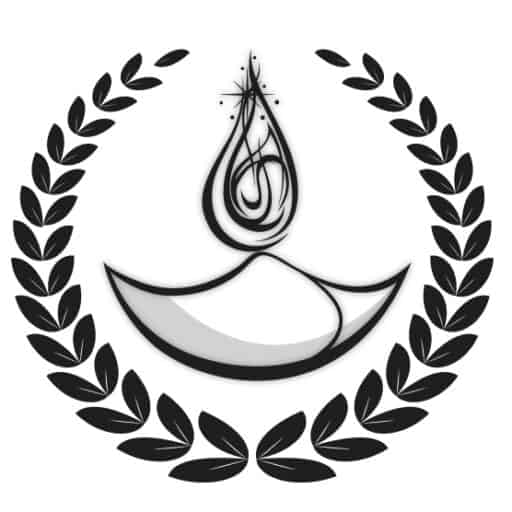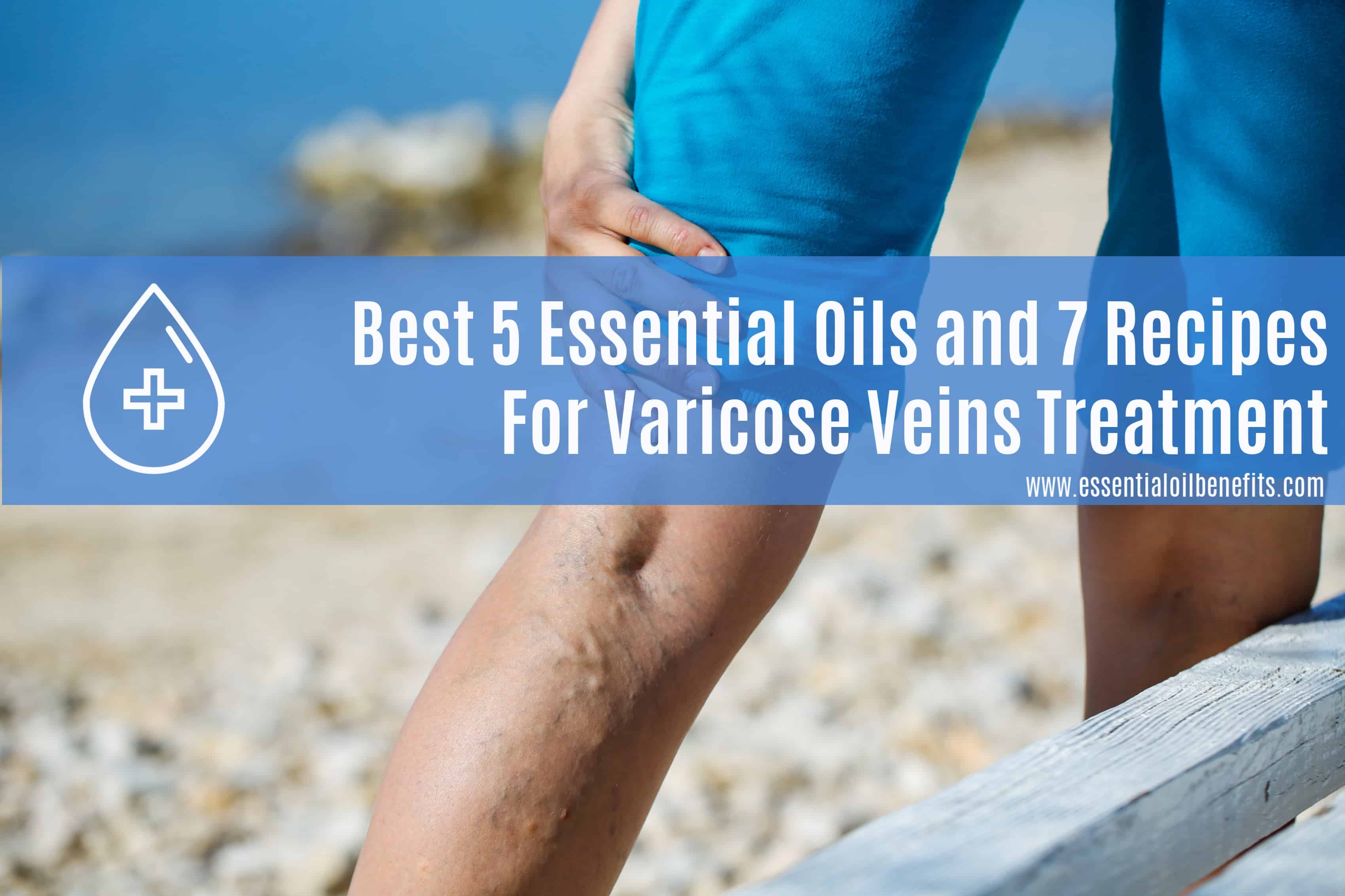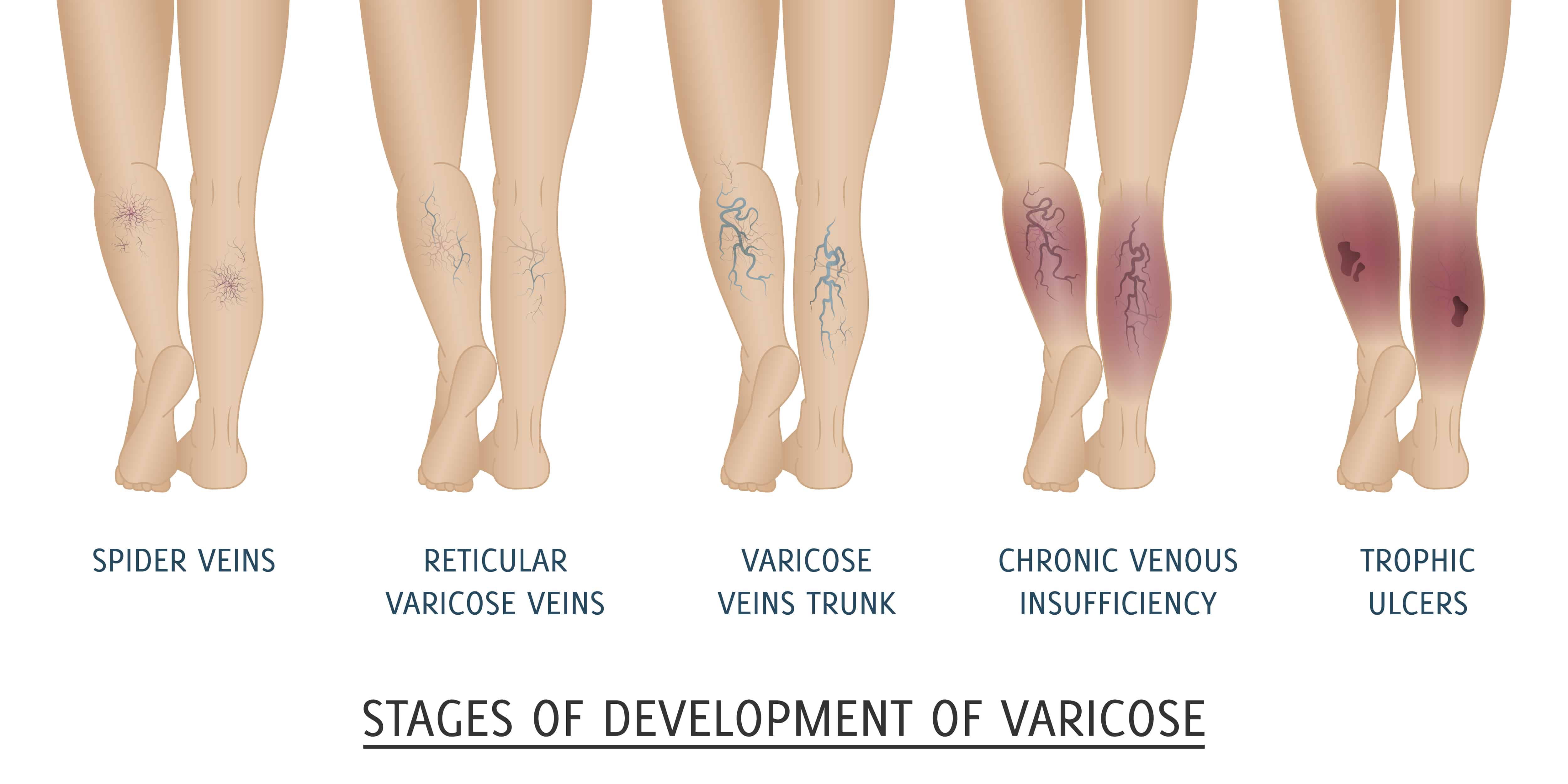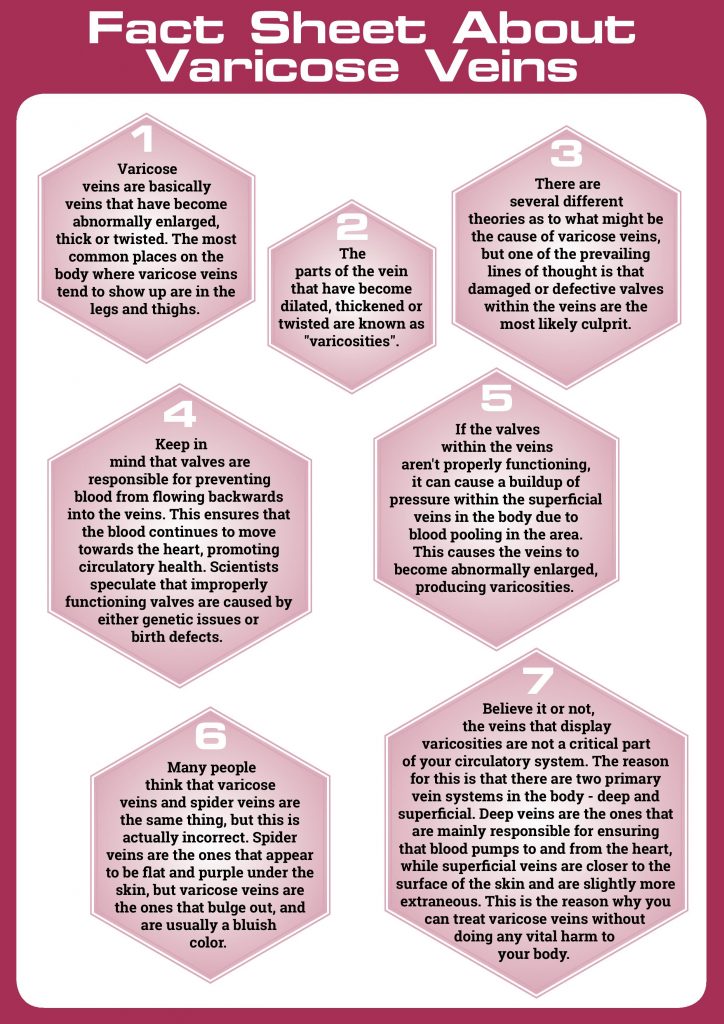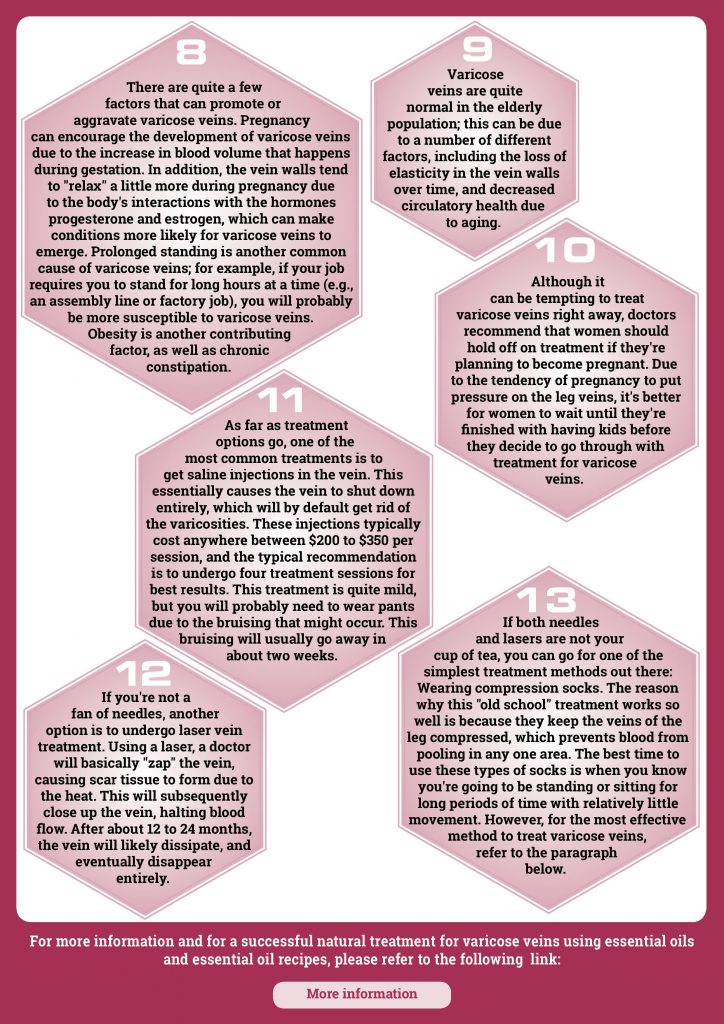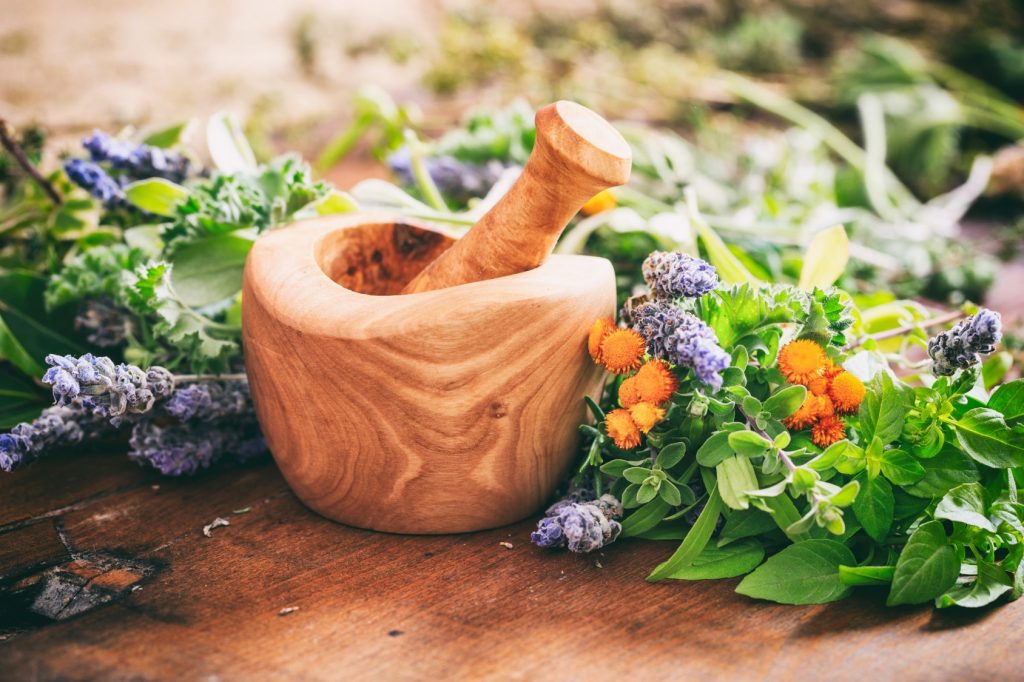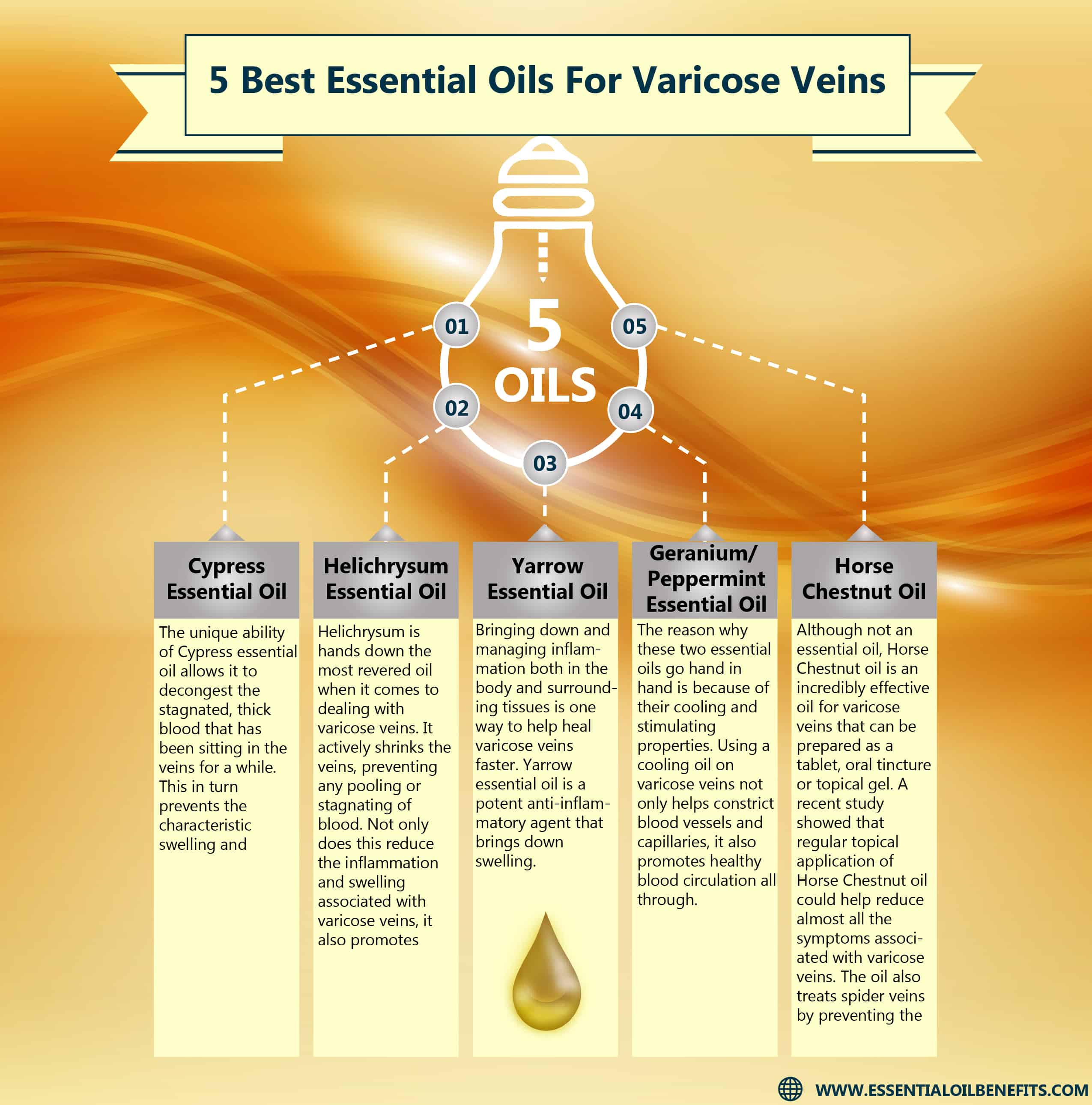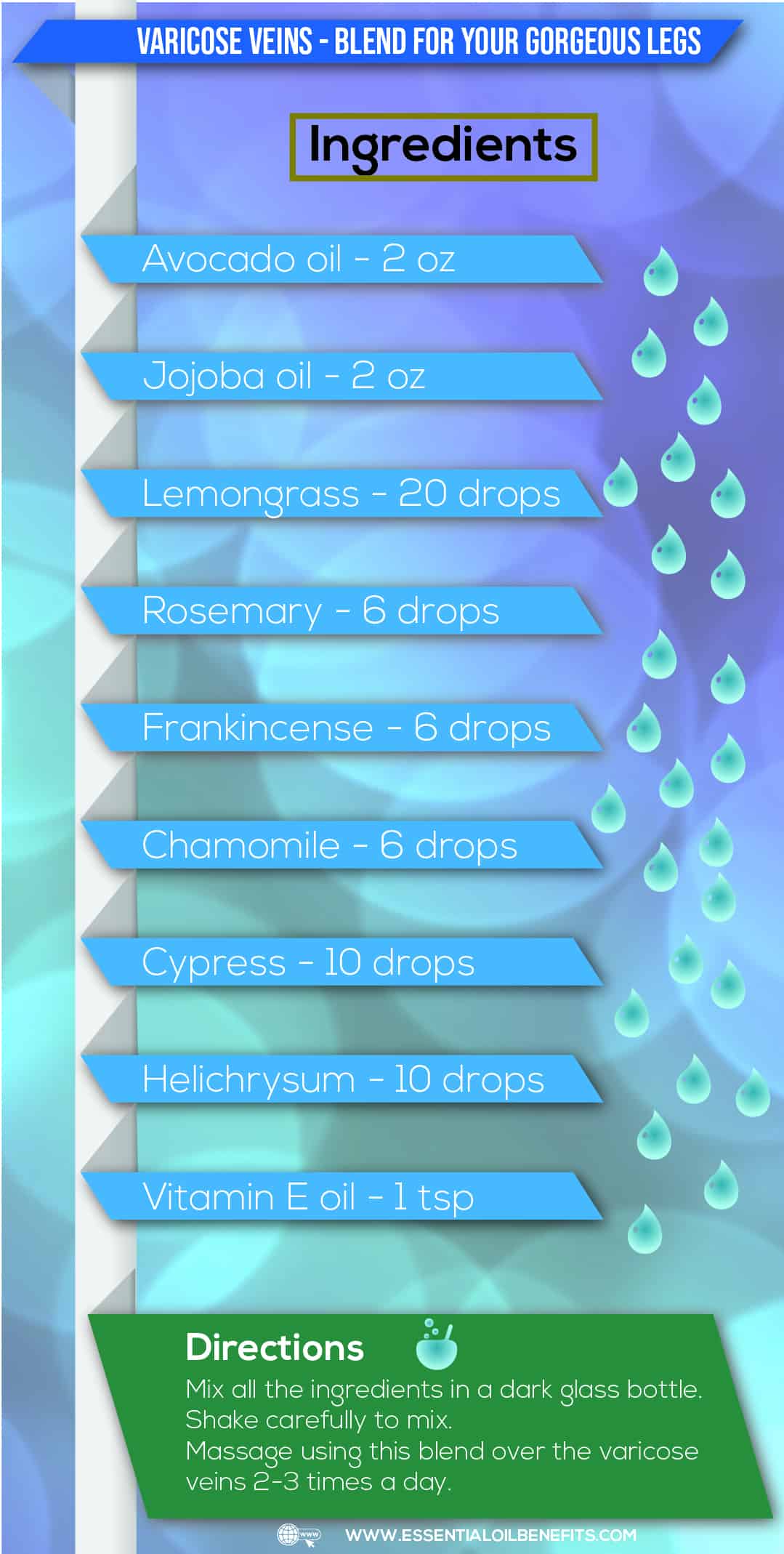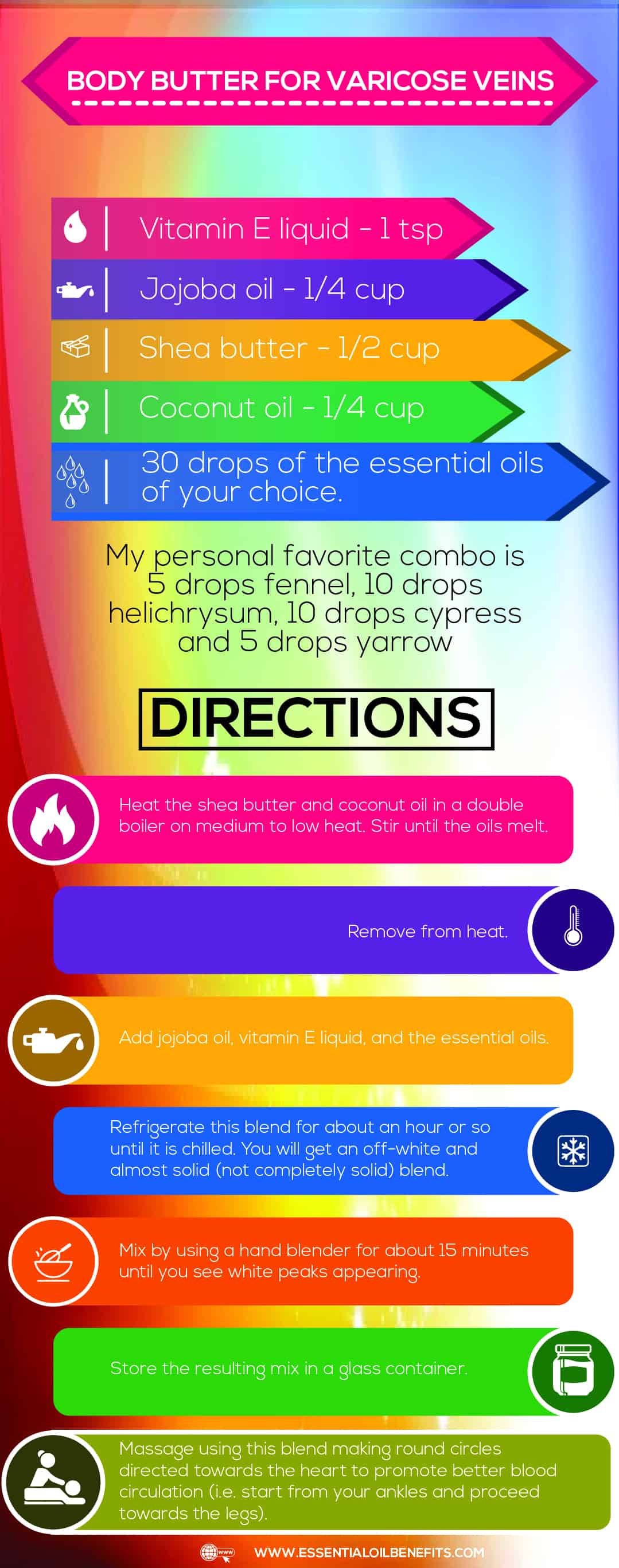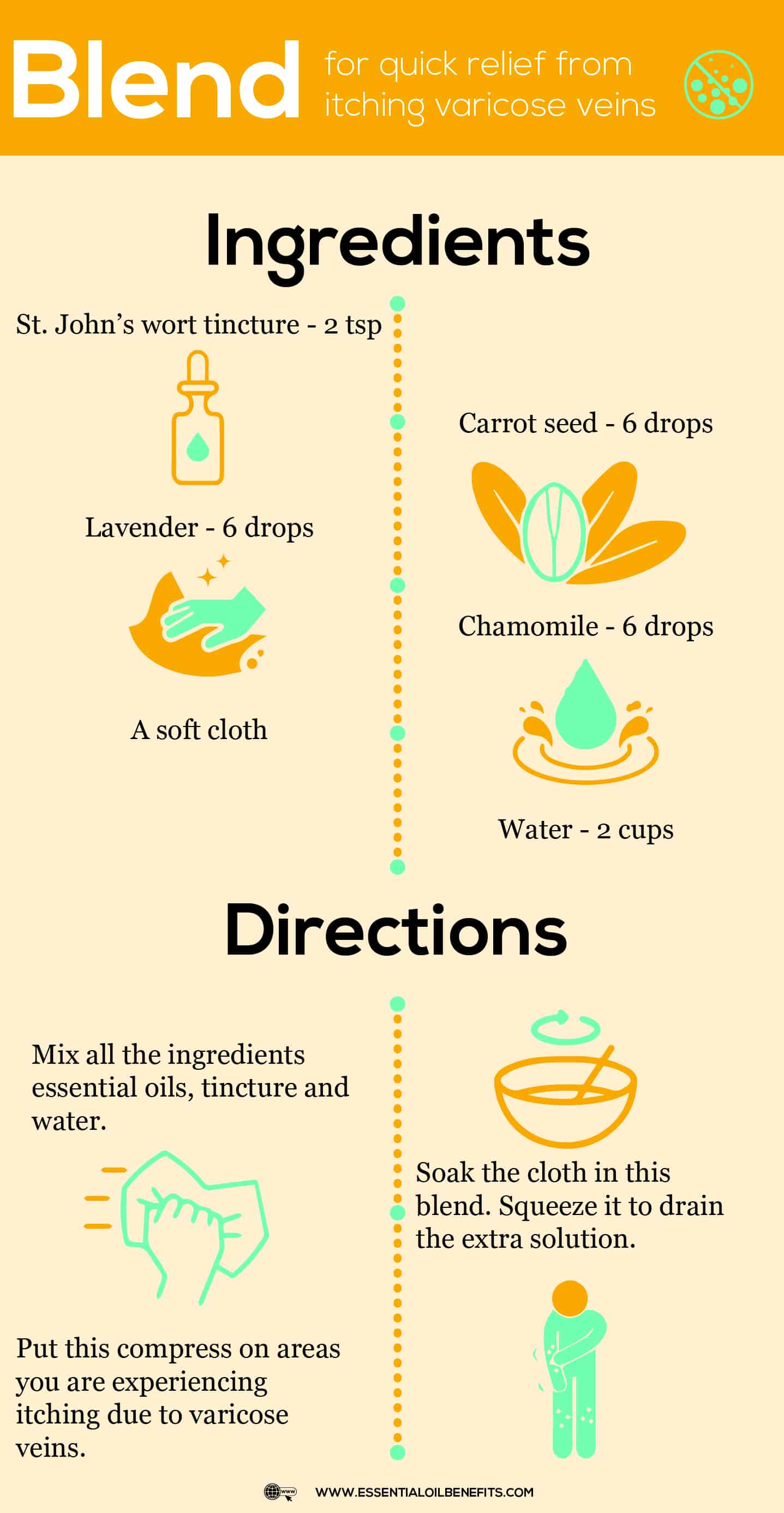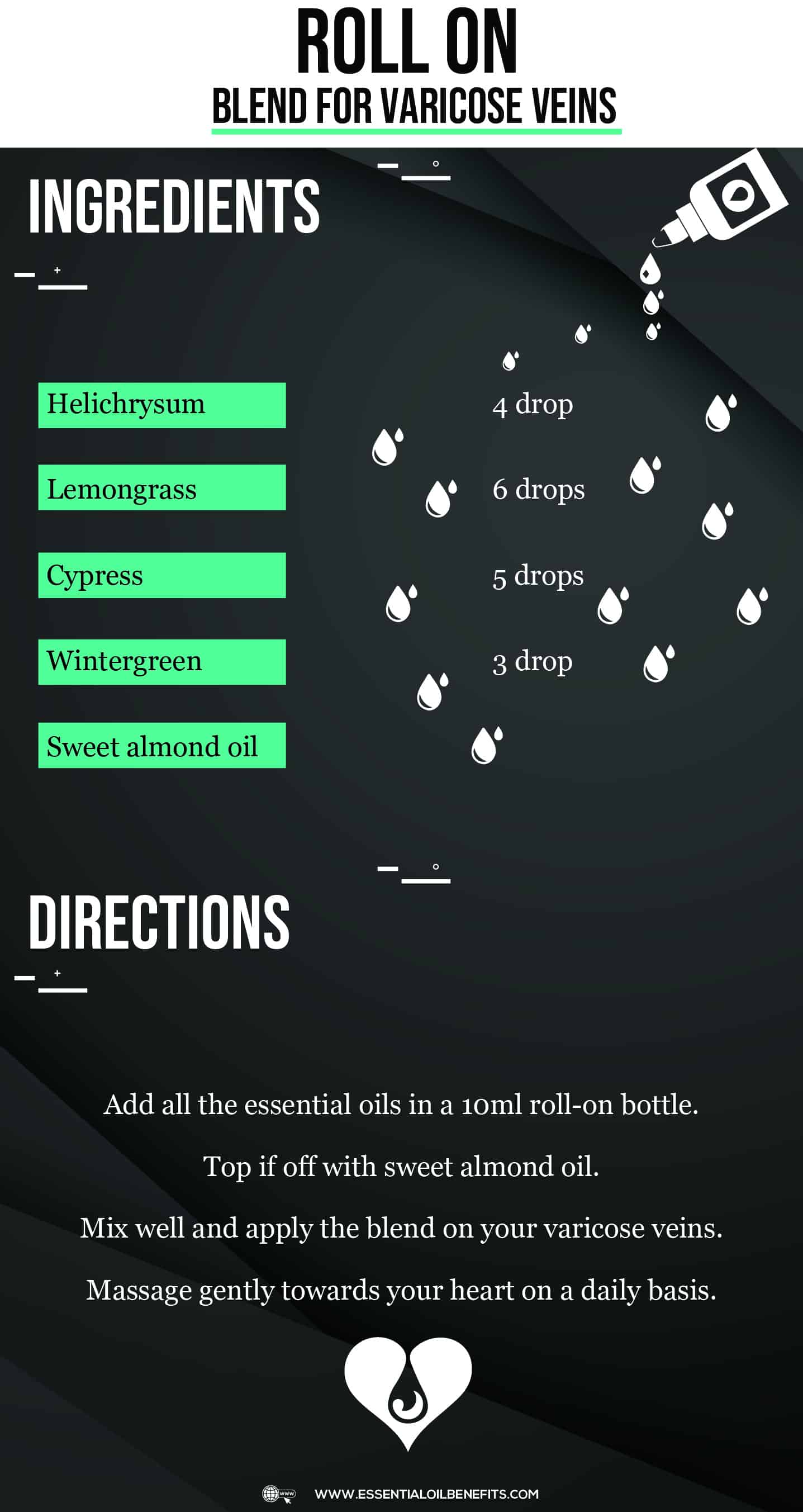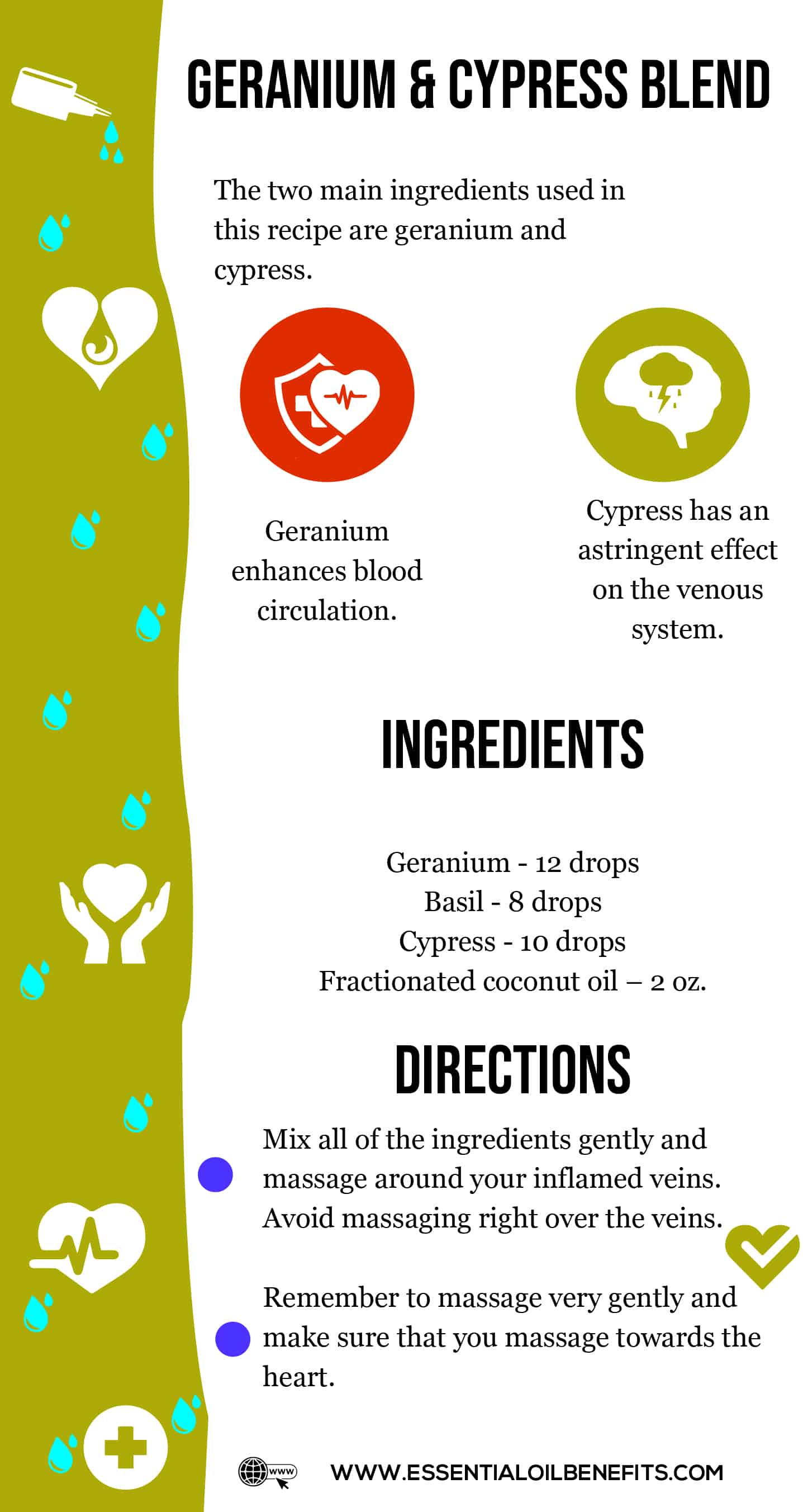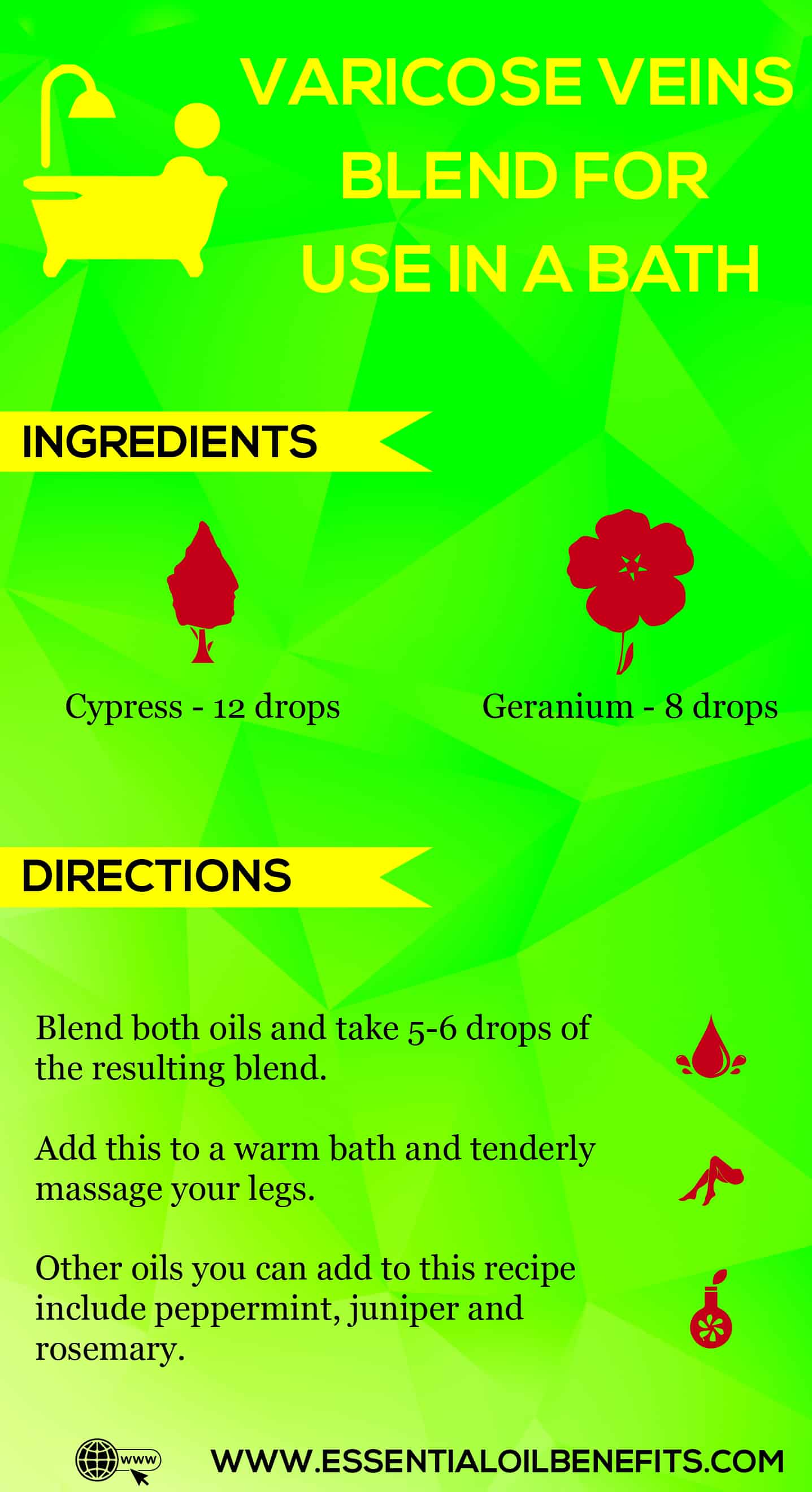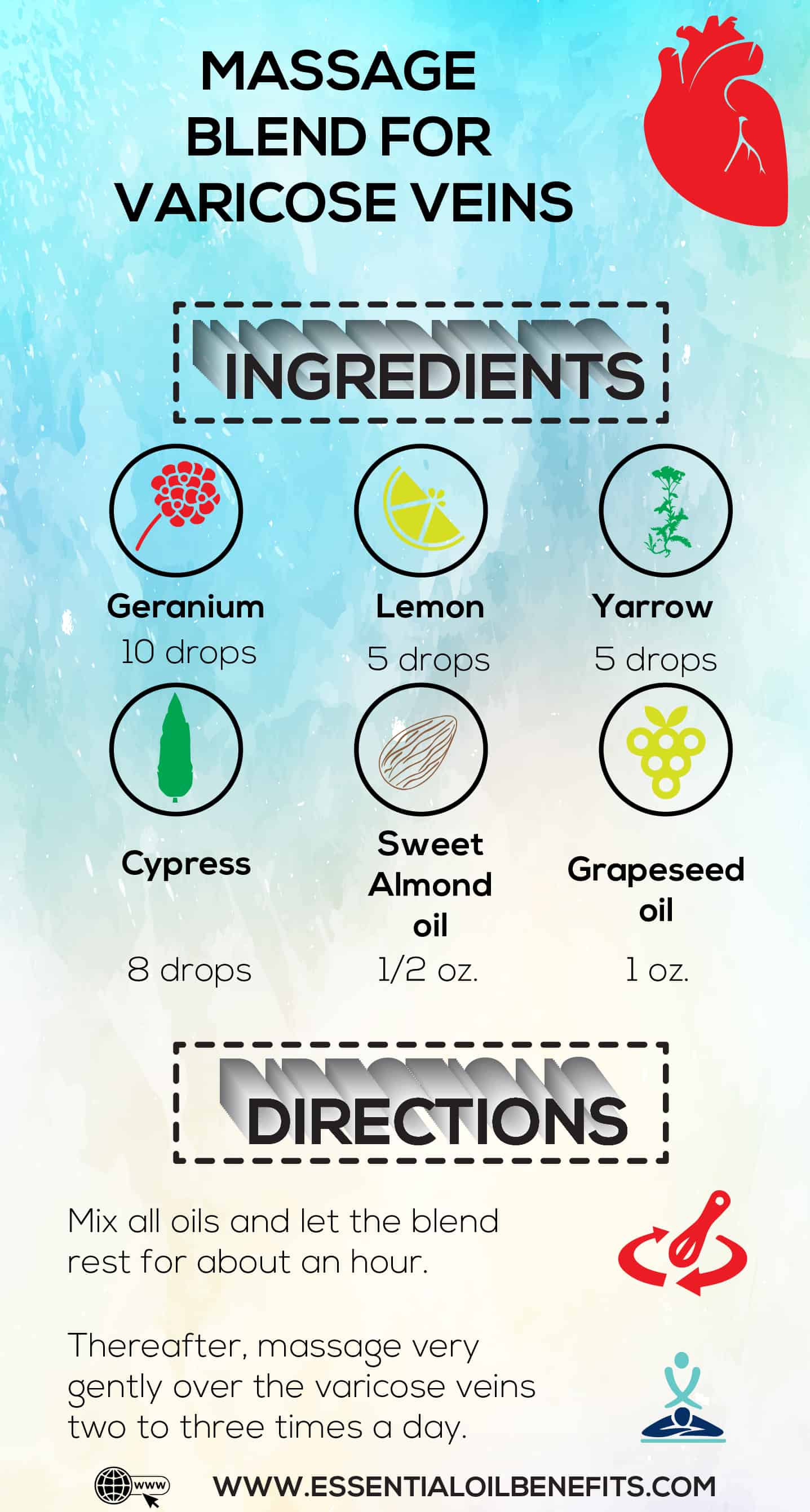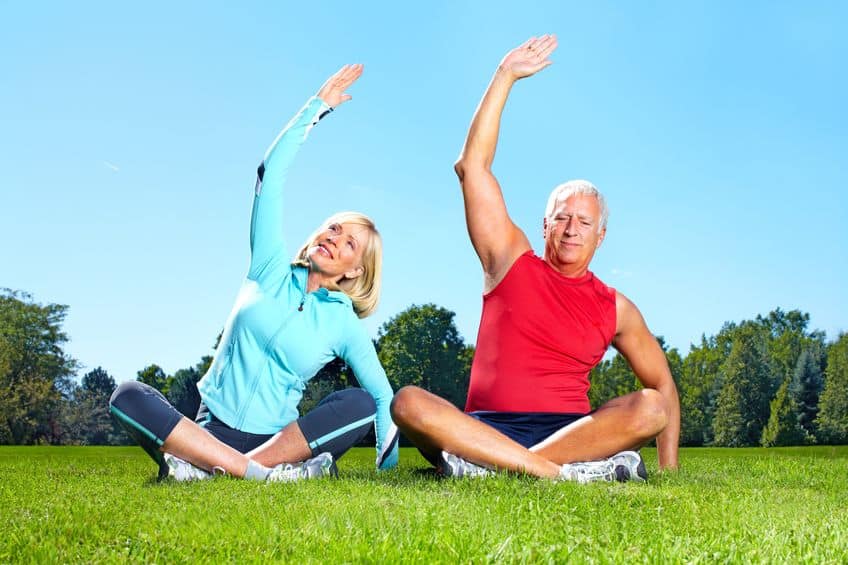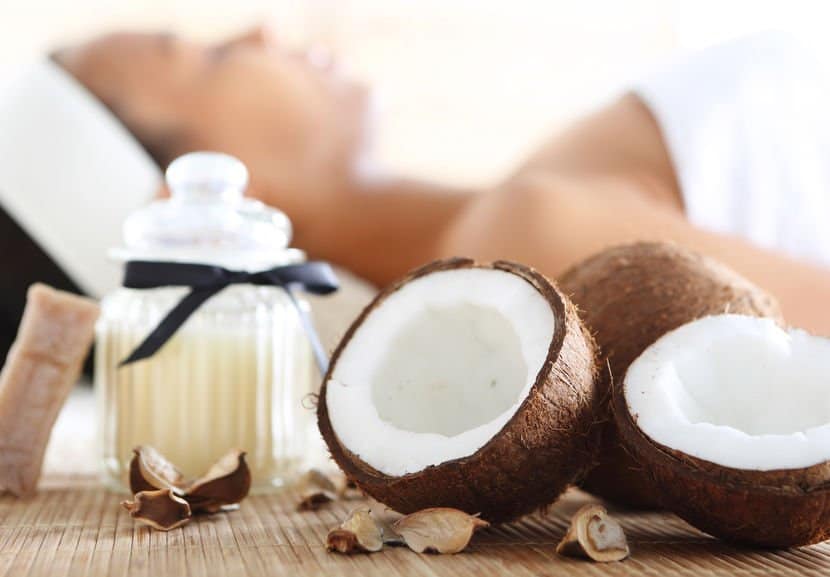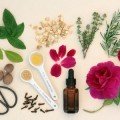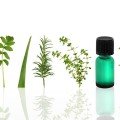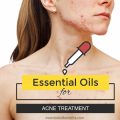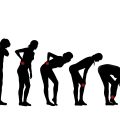Varicose veins are the veins located under the skin of your legs that have become enlarged, bulging and are full of twists and turns. While varicose veins may affect your life in many ways, they do not cause any serious medical conditions in the majority of individuals.
Announced by bluish, bulging cords running beneath your skin surface, varicose veins are a common occurrence especially among pregnant women and the elderly. Hormonal factors like pregnancy, menopause, puberty, using birth control pills, and Hormone Replacement Therapy (HRT) all contribute to the worsening of the condition.
In the US alone, more than 30 million people are affected by varicose veins. Family history as well as ageing may increase the risk of the condition. You may be interested to know some more statistics about this ailment.
- About 50% of people who suffer from varicose veins have a family history of the condition.
- If both of your parents have varicose veins, you have a 90% chance of developing it.
- If only one of your parents is affected, we girls have a 60% chance of developing it compared to our bothers at 25%.
- More women (55%) are at risk of developing varicose veins compared to men (45%)
- Approximately 50% of the US population over 50 years old will have varicose veins at some point in their lives.
What Are Varicose Veins
Enough of stats, let’s dive right in…
Varicose veins is characterized by swollen and very visible, twisted veins which are almost always on the legs and feet. Sometimes, the veins are surrounded by flooded capillary patches called spider veins.
Veins usually have valves inside to prevent blood from flowing backwards. This is quite essential, especially in the legs where the veins have to pump blood upwards against the flow of gravity.
In case of damage to the valves, the blood is usually pushed up will end up backflowing, causing increased pressure in the lower legs, varicose veins, and spider veins. While varicose veins can be painful and disfiguring, they’re usually harmless on many accounts. They do however hinder circulation to certain points in your legs causing other medical complications.
Facts About Varicose Veins
The two images below show 13 facts about Varicose Veins.
Symptoms Of Varicose Veins
Varicose veins does not necessarily come with pain, but there is one tell tale sign that is unmistakable. The main symptom of varicose veins is (as the name suggests) highly visible, discolored and misshapen veins on the legs and feet.
However, there may also be heaviness, swelling, leg pain and achiness all around the veins. Other symptoms include:
- Bluish or dark purple veins
- Bulging, twisted cord like veins in your legs
- Heavy or aching legs especially at night
- Ankle swelling
- Appearance of spider veins around swollen veins
- Burning, throbbing and muscle cramps in the lower legs
- Color changes with hardening of veins
- Dryness, redness and itchiness of affected area
- Minor injuries take a long time to heal
- In severe cases, blood might clot within affected veins
Causes Of Varicose Veins
Varicose veins only develop when the tiny valves in your veins stop functioning as normal. In a healthy vein or artery, blood flows smoothly and uniformly to and from the heart. But if the valves are weakened or damaged, blood can flow backwards causing enlarged varicose veins.
As we saw earlier, hereditary factors tend to play a big role in the development of varicose veins. Other related factors include pregnancy which causes water retention, obesity, aging, menopause, prolonged standing or even leg injury.
Chronic alcohol consumption also has an impact towards varicose veins since it not only causes a vasodilatory effect, it also increases blood viscosity.
Why Varicose Veins Are Such A Major Issue During Pregnancy?
It is rather common for expectant women to develop varicose veins through the first trimester. Due to the enlarged size of uterus and hormonal imbalance during the pregnancy, there is increased pressure around the veins causing them to enlarge.
Varicose veins occurring during pregnancy often correct themselves within about three months of the delivery; however, with successive pregnancies, these abnormal veins are likely to remain for a longer duration.
Why Essential Oils Are Useful For Varicose Veins And How To Use Them!
Essential oils can be your best ally in the fight against varicose veins – added to your daily routine, they take you one step closer to healthy, natural living.
Essential oils like rosemary, rose, peppermint, neroli, myrrh, lemon, juniper, yarrow, ginger, geranium, frankincense, cypress, cedarwood and clary sage are very useful in restoring the normal blood circulation in areas affected with varicose veins. You can use them in several different ways to help ease the symptoms associated with varicose veins, including :
- Massage Oil – When using essential oils for varicose veins, the best method is to use them topically for fast results. But remember, essential oils are extremely concentrated. So it’s always important to dilute them with a carrier oil of choice such as coconut oil or sweet almond oil. A dilution rate of 15-20 drops of essential oil to an ounce of carrier oil is recommended. Not only do the resulting blends help treat varicose veins by seeping deep into the skin, but the massaging action also encourages blood circulation to the heart.
- Warm/Cool Compress – By adding essential oils to your compression therapy, you can reap twice the benefits of compression socks and hosiery. All you have to do is soak a cloth in a blend of essential oils and apply it to your legs for about 20 minutes. Since you won’t be massaging the legs during compression, it’s important to keep them elevated.
- Essential Oil Bath – After a long day at the workplace, nothing helps relax the entire body like a nice, hot dip in the tub. Heat is known to work wonders for the muscles, tissues, and even encourage better circulation.
- Sitz Bath – You’re probably wondering what a sitz bath is doing in the middle of a varicose veins segment. I mean, aren’t varicose veins only found in the legs? Wrong, turns out that hemorrhoids are actually varicose veins of the anus. But not to worry, they can be easily treated by adding a few drops of your favorite essential oil to your sitz bath blend.
- Diffuser – Diffusing your essential oils is another great way to reap more benefits even as you sleep through the night. A diffuser will emit millions of tiny particles in the air which will be absorbed into the body via your respiratory system.
Two Important Factors That Will Help In Getting Rid Of Varicose Veins
No. 1: Essential oils that promote good blood circulation
The essential oils mentioned below strengthen the capillary walls of your blood vessels (weak blood vessels cause varicose veins) and help in promoting better blood circulation.
- Grapefruit
- Geranium
- Fennel
- Cypress
- Basil
- Helichrysum
- Rosemary
- Orange
- Lime
- Lemon
- Juniper Berry
No. 2: Essential oils that reduce inflammation
It is highly likely for people suffering from varicose veins to have inflammation. Just add 1 or 2 of the following essential oils to the blend you are using to reduce inflammation:
- Peppermint
- Marjoram
- Lavender
- Eucalyptus
- Chamomile
Do not forget to add a carrier oil
Although some essential oils, like lavender, may be applied over the skin without diluting them in a carrier oil, it is better to use essential oils in diluted forms. I prefer using olive and coconut oil as carrier oil to deal with varicose veins; however, you can also go for sweet almond or jojoba, as they are excellent for almost any type of skin.
Sweet almond penetrates deep into the skin, carrying the essential oils along with it. Additionally, it stimulates collagen production and speeds up healing. Because of its anti-inflammatory properties, Jojoba is wonderful when it comes to healing the wounded veins and stimulating the production of collagen.
Recommended Natural Product For Varicose Veins Treatment
What if you don’t have time to make any of the above blends or they simply do not work for you for whatever reason – don’t despair as there is a gentle, natural product that will get rid of those spider, varicose veins, H-Varicose Veins Formula.
You only require a few drops of this unique formula for the swelling to start disappearing. My mum used it successfully. The only other tip I will give you is to be consistent and patient in its use and you will see the excellent results.
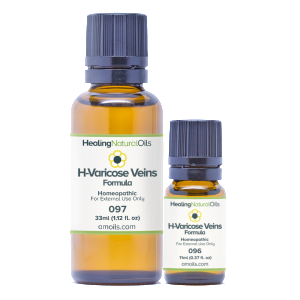 Click Here To Read My Review on Amoils H-Varicose Veins Now!
Click Here To Read My Review on Amoils H-Varicose Veins Now!
Best 5 Essential Oils For Varicose Veins
Here are some of the best essential oils I believe can play a supportive role in your fight against varicose veins.
1. Cypress
Making an entrance with a distinctive, clear and refreshing scent, cypress is one of the most potent venous decongestants on this list. This unique ability allows the oil to decongest the stagnated, thick blood that has been sitting in the veins for a while. This in turn prevents the characteristic swelling and bulging of the veins in the legs.
Likewise, Cypress oil is known for its vaso-constricting properties which contract the blood vessels forcing blood to flow properly. To make use of the oil, use 5 drops of Cypress diluted in 1 tsp of carrier oil and apply to the affected area twice a day. Repeat daily for 4 weeks.
2. Helichrysum
Although less known than other essential oils on this list (probably due to its price) Helichrysum is hands down the most revered oil when it comes to dealing with varicose veins. It actively shrinks the veins and prevents any pooling or stagnating of blood.
Not only does this reduce the inflammation and swelling associated with varicose veins, it also promotes better circulation. In addition to being a venous decongestant, this oil also works as a blood thinner that eradicates blood clots which interfere with circulation.
3. Yarrow
Bringing down and managing inflammation both in the body and surrounding tissues is one way to help heal varicose veins faster.
When inflammation and swelling in the legs starts to occur, the valves within your veins have trouble to revert back to their healthy state. Yarrow essential oils is a potent anti-inflammatory agent that brings down swelling.
4. Geranium/Peppermint
The reason why these two essential oils go hand in hand is because of their cooling and stimulating properties. Using a cooling oil on varicose veins not only helps constrict blood vessels and capillaries, it also promotes healthy blood circulation all through.
In addition to warming or cooling, these oils also have vaso-dilating qualities that prevent blood from pooling and keep it moving towards the heart. This helps reduce both the appearance of bulging veins as well as the discomfort that comes with varicose veins.
5. Horse Chestnut Oil
Although not an essential oil, Horse Chestnut oil is an incredibly effective oil for varicose veins and can be prepared as a tablet, oral tincture or topical gel. People have been using the oil to address several skin conditions such as inflammation, itchiness, swelling and pain.
A study done in 2001 concluded that regular topical application of Horse Chestnut oil could help reduce almost all the symptoms associated with varicose veins. The oil also treats spider veins by preventing the breakdown of capillaries.
Top 7 Essential Oil Recipes For Varicose Veins
Here I am sharing few recipes to help you get back your gorgeous legs. Try all of them to figure out the one that works best for you. In case you are an expectant mother, use only oils that you are accustomed to and that you are sure will not cause any negative effect. Here you will find a list of essential oils not recommended to be used during pregnancy.
Blend 1 – Blend for your gorgeous legs
Ingredients
- Avocado oil – 2 oz.
- Jojoba oil – 2 oz.
- Lemongrass – 20 drops
- Rosemary – 6 drops
- Frankincense – 6 drops
- Chamomile – 6 drops
- Cypress – 10 drops
- Helichrysum – 10 drops
- Vitamin E oil – 1 tsp
Directions
- Mix all the active ingredients in a dark, glass bottle. I use a spray bottle; however, a dropper bottle would do the job too.
- Shake carefully to mix.
- Massage using this blend over the affected areas 2-3 times a day.
Blend 2 – Body butter for varicose veins
Ingredients
- Coconut oil – 1/4 cup
- Jojoba oil – 1/4 cup
- Shea butter – 1/2 cup
- Vitamin E liquid – 1 tsp
- 30 drops of the essential oils of your choice. My personal favorite combo is 5 drops fennel, 10 drops helichrysum, 10 drops cypress and 5 drops yarrow
Directions
- Heat the shea butter and coconut oil in a double boiler on medium to low heat. Stir up until the oils melt, only a few minutes.
- Remove from heat.
- Add jojoba oil, vitamin E liquid, and the essential oils.
- Refrigerate this blend for about an hour or so until it is chilled. You will get off-white and almost solid (not completely solid) blend.
- Mix by using a hand blender for about 15 minutes until you see white peaks appearing.
- Store the resulting mix in a glass container.
- Massage using this blend making round circles directed towards the heart to promote better blood circulation (i.e. start from your ankles and proceed towards the legs).
- This body butter can be preserved for about six months. Store this at room temperature. During warm weather, the body butter may slightly melt.
Note: I do not recommend using this body butter during the night. These circulation-boosting essential oils raise your blood circulation and they are also very stimulating! So, this could disrupt your restful sleep.
Blend 3 – Blend for quick relief from itching varicose veins
Ingredients
- St. John’s wort tincture – 2 tsp
- Carrot seed – 6 drops
- Lavender – 6 drops
- Chamomile – 6 drops
- A soft cloth
- Water – 2 cups
Directions
- Mix all the ingredients – essential oils, tincture and water.
- Soak the cloth in this blend. Squeeze it to drain the extra solution.
- Put this compress on areas you are experiencing itching due to varicose veins. You can use this blend on a daily basis for prompt relief.
Blend 4 – Roll-on blend for varicose veins
Helichrysum is among the essential oils I prefer the most for treating conditions like varicose veins. While this oil is comparatively costly, it is quite useful for conditions like varicose veins due to its anesthetic, antispasmodic and anticoagulant properties. Helichrysum oil helps in regenerating the nerves and reduces the pain. It clears the blood that has coagulated within the veins to ease you from discomfort and helps to regenerate the nerves. The regular application of this essential oil causes the varicose veins to disappear gradually. Apply 2-4 drops of this oil (diluted in 1 tsp almond oil) directly onto the skin where varicose veins have appeared and massage it in the direction of the heart. Here is an essential oil recipe using helichrysum as its active ingredient. I have personally tried this recipe and it achieves quick results.
Ingredients
- Helichrysum – 4 drops
- Lemongrass – 6 drops
- Cypress – 5 drops
- Wintergreen – 3 drop
- Sweet almond oil
Directions
- Add all the essential oils in a 10ml roll-on bottle.
- Top if off with sweet almond oil.
- Mix well and apply the blend on your varicose veins.
- Massage gently towards your heart on a daily basis.
Blend 5 – Geranium & Cypress blend for varicose veins
The two main ingredients used in this recipe are geranium and cypress. Geranium enhances blood circulation and Cypress has an astringent impact on the venous system.
Ingredients
- Geranium – 12 drops
- Basil – 8 drops
- Cypress – 10 drops
- Fractionated coconut oil – 2 oz.
Directions
- Mix all of the ingredients gently and massage around your inflamed veins.
- Remember to massage very gently and make sure that you massage towards the heart. In addition, avoid massaging right over the veins – just massage around them.
Blend 6 – Use in the bath
Ingredients
- Cypress – 12 drops
- Geranium – 8 drops
Directions
- Blend both oils and take 5-6 drops of the resulting blend.
- Add this to a warm bath and tenderly massage your legs.
- Other oils you can add to this recipe include peppermint, juniper and rosemary.
Blend 7 – Massage blend for varicose veins
Ingredients
- Geranium – 10 drops
- Lemon – 5 drops
- Yarrow – 5 drops
- Cypress – 8 drops
- Sweet Almond oil – 1/2 oz.
- Grapeseed oil – 1 oz.
Directions
- Mix all oils and let the blend rest for about an hour.
- Thereafter, massage very gently over the varicose veins two to three times a day.
What Is The Best Way To Use The Essential Oil Recipes Mentioned Above?
I would recommend that you can apply these essential oil blends once daily. This will give you smooth and moisturized legs! From what I have learnt, these recipes generally take about a month to show visible results. One needs to be regular in their usage for at least a couple of months. In order to avoid sensitization, use these essential oils for a period of 3 weeks, and then stop for a week before starting to use them again.
Apply the blend liberally since you need to cover the entire leg. Make sure to rub towards the heart. As you know that the valves within the veins aren’t holding the blood like they should, you don’t want to make the issue worse by rubbing hard.
While essential oils are available in different price ranges, it is best not go for the cheapest oil that you find, i.e. they are cheap for a reason!
Natural Treatment For Varicose Veins
The treatment options for varicose veins range from conservative all the way to minimally invasive. However, the standard treatments can get very expensive and come with side effects from medications. I’ve compiled a list of the most effective natural remedies that should help clear and prevent varicose veins.
1. Exercise
Regular exercise and physical activity is hands down the best thing you can do to improve inflammation and increase blood flow to the legs. Daily exercise encourages better circulation which in turn helps push blood that has collected in the veins.
Regular physical activity also helps to lower blood pressure which is one of the causes and risk factors for varicose veins. Some of the most effective exercise are ones that get the calf muscles working without additional strain. These low impact exercises include walking, cycling, yoga and swimming.
2. Compression Stockings
Compression stockings can also come in handy when it comes to keeping veins in their right position. This in turn encourages circulation and helps prevent pain, swelling, and pooling of blood in the veins.
There are different types of compression socks that offer different compression levels depending on how advanced your varicose veins are. Likewise, you can wear the compression hosiery during the day and night to reduce cramping.
3. Apple Cider Vinegar
This might just be the most effective natural remedy on the list. One of the common symptoms associated with varicose veins is heaviness and swelling of the veins in the legs.
Being a natural body cleanser, vinegar has the ability to detoxify and improve blood circulation in the body. Once the blood starts to circulate normally, the swelling and heaviness in the veins tends to reduce to a large extent.
To use it as a home remedy, apply undiluted apple cider vinegar to your skin and gently massage the area. Remember to massage upwards towards the heart.
4. Dietary Changes
If you have varicose veins or any other inflammatory condition, then it’s imperative that you watch what you eat. The best thing you could do is to turn your diet into an anti-inflammatory one.
Anti-inflammatory foods not only help improve blood circulation, they also reverse inflammation substantially. This makes it possible to heal current varicose veins and prevent future ones from developing.
A diet rich in sugar, alcohol, caffeine and processed food is very detrimental to people with varicose veins. Such a diet contributes to blood pressure issues, hormonal imbalance, low circulation and arterial damage.
The best anti-inflammatory foods include antioxidants like flavonoids, natural diuretics that reduce water retention, magnesium rich foods like avocados and green leafy vegetables, as well as high fiber foods.
5. Horse Chestnut Seeds
Horse chestnut seeds have been used for decades for the treatment of varicose veins. These seeds have an innate anti-inflammatory ability and an anti swelling effect that increases venous tone.
Likewise, Horse Chestnut seeds also have a compound called aescin that improves elastic strength of your veins which reduces appearance of varicose veins. The seeds also prevent release of enzymes that are known to damage capillary walls and cause spider veins.
Other Alternative Treatment Of Varicose Veins Using Coconut Oil & Castor Oil
Coconut Oil
There’s no doubt about it; improper posture, crossing the legs for hours, standing all day or sitting for prolonged periods has been known to accelerate the formation of varicose veins. Well, instead of going through rigorous medications or taxing surgical procedures, there is a simpler, more natural solution.
Coconut oil is extracted by pressing the dried meat of mature coconuts. This oil has been proven to contain a myriad of benefits and medical properties. These include the ability to moisturize and heal the skin, fight off germs and bacteria, as well as reduce inflammation both outside and within the body.
A study published recently shows that virgin coconut oil possesses analgesic and anti-inflammatory compounds. By virtue of its really high lauric acid levels, coconut oil works to reduce swelling which in turn has a direct impact on pain and discomfort. In fact, some studies show coconut oil is just as effective as some pain medications including indomethacin.
Apart from temporary pain relief, coconut oil increases blood circulation to applied area as well as improve the immune response. Lastly, adding coconut oil to your diet has been shown to improve physical and mental energy levels – much healthier than an energy drink.
Castor Oil
Castor oil is a vegetable based oil that is currently used for a broad range of medical and cosmetic purposes. The oil is infamous for its healing and restorative properties which help work miracles on the skin. The fatty acids in castor oil act as humectants which prevent water loss and keep the skin moisturized.
But what we’re more interested in today are the impressive anti-inflammatory properties of this oil. When applied topically, castor oil has the ability to relieve pain and cut down inflammation.
These properties come in very handy when dealing with conditions like varicose veins or a myriad of other inflammatory conditions. As for the analgesic properties, these can be attributed to the high ricinoleic acid levels found in castor oil. These high levels make castor oil not only good for varicose veins, but also effective and helpful for conditions like arthritis and psoriasis.
9 Lifestyle Changes For Long Lasting Relief From Varicose Veins
While you can’t prevent varicose veins from developing, there are some things you can do to keep existing varicose veins from getting any worse. The following self-care measures will also reduce the discomfort that varicose veins cause. They include:
- Avoid sitting or standing for longer durations at a stretch. Take breaks after every thirty minutes. You can walk a bit, stretch, stand for sometime or change your sitting position. Just don’t remain in a same position for a long period of time.
- In the event you sit for extended durations, keep your legs elevated using a stool or a chair. In fact, try keeping your legs in an elevated position even during your sleep.
- Don’t sit with crossed legs or crossed ankles.
- Avoid wearing skin tight clothing, especially those that could hamper the blood circulation around the legs, waist and the groin area.
- Avoid wearing high heeled footwear. Instead, go for low heeled shoes which work your calf muscles. Likewise, don’t wear clothes that are too tight around the legs, waist or groin because they reduce blood circulation to these areas.
- Watch your weight – Obesity is one of the main causes of varicose veins. If you can maintain a healthy weight and follow a low salt diet, you’ll be well on your way to preventing varicose veins.
- Exercise – The most beneficial activity when it comes to preventing varicose veins is exercising. Get running, walking, or even some yoga in your daily routine to encourage blood circulation and increase muscle strength.
- Avoid alcohol because it dilates blood vessels, making your condition worse.
- Follow a balanced diet. Add fibrous foods to your meals. Fruits and veggies that are rich in antioxidants are perfect for you.
The Final Word
The use of essential oils when complemented with certain lifestyle changes will certainly make your varicose veins disappear in a short period of time. However, make sure that you follow caution with some of the essential oils.
Individuals with hypertension should stay away from using Lemon and Rosemary as these oils may cause adverse reactions. For those that have a pre-existing medical condition, it is always a good idea to consult a healthcare professional before going ahead on an essential oil regimen to make sure that you will not have any side effects due to the oils reacting with your regular medication.
